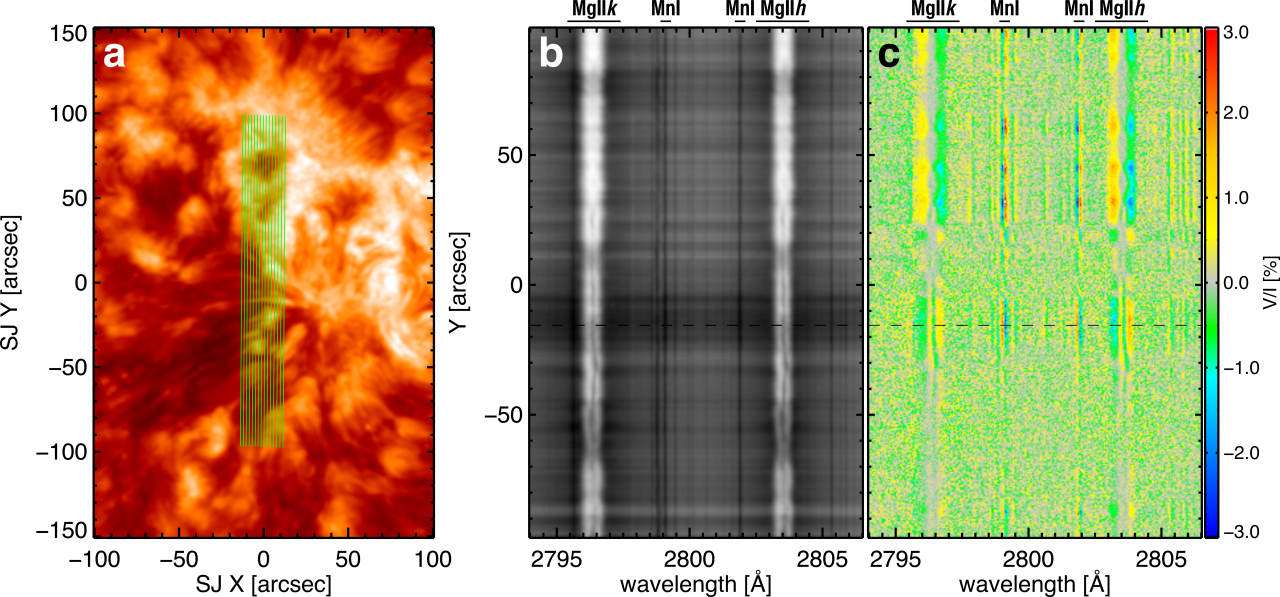The magnetic field in the solar chromosphere plays a key role in the heating of the outer solar atmosphere and in the build-up and sudden release of energy in solar flares. However, uncovering the magnetic field vector in the solar chromosphere is a difficult task because the magnetic field leaves its fingerprints in the very faint polarization of the light, which is far from easy to measure and interpret.
We analyse the spectropolarimetric observations obtained with the Chromospheric Layer Spectropolarimeter on board a sounding rocket. This suborbital space experiment observed the near-ultraviolet light of the Sun, inaccessible from the ground, in an active area of the solar surface close to a sunspot, and was motivated by the theoretical investigations by the POLMAG group in the IAC.
Using the numerical code developed in-house, we infer the stratification of the most important properties of the solar plasma. We find strong evidence of the magnetic origin of the heating of the plasma in the chromosphere of the active region plage and the overlying moss observed by the Atmospheric Imaging Assembly, with a strong correlation between temperature, electron density, and magnetic field vertical flux. Contrarily, in the super-penumbra we find that the more heated regions are in between the magnetic field vertical flux concentrations, suggesting that the details of the heating mechanism may differ from those in the plage, but with the magnetic field still playing a key role.
References:
For a recent review on this topic see Trujillo Bueno & del Pino Alemán (2022; Annual Review of Astronomy and Astrophysics, Vol. 60, 415).
More information on the theoretical research and numerical tools development in the POLMAG group is available at https://research.iac.es/proyecto/polmag/


